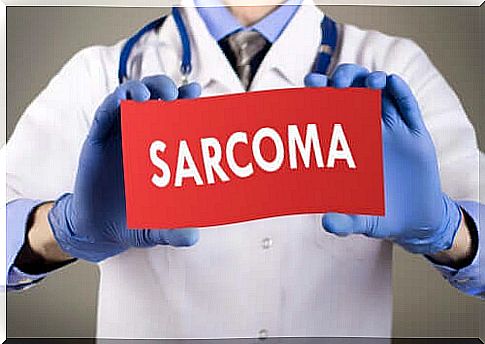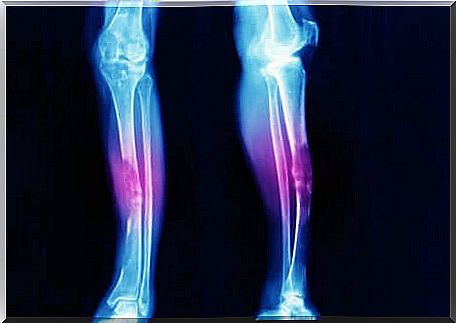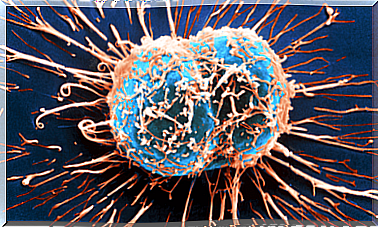The Different Types Of Sarcoma
Sarcoma is cancer that occurs in soft tissues and bones. Depending on the region of tumor growth, there are different types of clinical manifestations.

Sarcoma is a very diverse pathology that manifests itself in different types of clinical presentations. Sometimes these are bumps under the skin, other times pain in the bones or abdominal distension, or even weight loss, among other symptoms.
According to the American Cancer Society, this disease responds to an oncological variant that proliferates in soft and bone tissue , from adipose tissue (fat) to nervous tissue, including bones and muscles.
Sarcomas are not very common. Various studies report, for example, that osteosarcoma (tumor in the skeleton) accounts for only 0.2% of all malignant cancers. This translates to an incidence of three cases per million people each year.
About cancer and its importance …
It is difficult to talk about the different types of sarcoma without first knowing some basic facts about cancer. This disease is characterized by uncontrolled cell proliferation in certain areas of the body. This gives rise to tumors which, if they spread elsewhere, lead to the famous metastases .
The Spanish Society of Medical Oncology publishes updated data on the global cancer situation:
- In 2018, more than 18 million cancers were detected worldwide.
- Among them, 11.6% corresponded to processes of malignant tumors in the lung.
- The lowest diagnosis is uterine cancer (2.1%), although 24.6% of cancers are of less common origin (not counted as single types).
- In 2019, a total of 277,234 cases were diagnosed in Spain.
- There is an annual increase in the number of cases worldwide since it is estimated that by 2040, nearly 30 million additional patients with malignant tumors will be detected (63% more than in 2018).
As we can see, the numbers are alarming. Therefore, it is interesting to get to know each of the types perfectly, however rare they may be, in order to save lives all over the world.

Types of sarcoma
As we mentioned before, all types of sarcoma are malignant tumors that start in soft tissue and bone. According to statistics, they represent 20% of solid cancers detected in pediatrics and less than 1% in adults.
The predisposition to suffer from this pathology depends on genetic and environmental factors, and an interaction between the two. Despite this, the concrete causes remain unclear. According to a journal article published on the science site ScienceDirect in 2007, there are several types of sarcoma. We detail them below.
Liposarcoma
It is the most common subtype since it accounts for 20% of sarcoma cases in the United States. This cancer grows in fat cells all over the body. But, in most cases, it occurs in the fatty tissue of the limbs or abdomen.
It is very striking. This is because when it develops in the legs and arms, one can observe a lump growing under the skin, as well as pain and weakness in the affected limb. In the case of abdominal tumors, the most common symptoms include constipation, bloating, and pain.
In most cases, tumor removal and radiation therapy are the therapies to follow. Although there are several types of liposarcoma depending on their morphology, they usually do not metastasize and resolve with surgery alone.
Leiomyosarcoma
According to the organization sarcomahelp.org , leiomyosarcoma is defined as a derivative of smooth muscle cells, usually from the uterus or gastric tissue. Among all soft tissue sarcomas, this type accounts for 5-10%, which makes it very common as well.
There are no specific characteristics for the diagnosis of this pathology. However, the sources cited above indicate that it is more common in people over the age of 50 or 60 and affects women more. Various studies show that treatment with gemcitabine gives good results in more than 50% of patients.
Synovial sarcoma
Synovial sarcoma is less common and usually occurs near the joints (especially the knees) in young adults. It is characterized by a deep, slowly growing mass that can be tender or painful to the touch.
Research shows that this type of cancer is correlated with chromosomal variations. Its genetic component is therefore very important. As with liposarcoma, surgical extraction is the best option.

Other types of sarcoma
In addition to the three we just detailed, there are other types of sarcoma that are worth mentioning. Here are a few :
- Angiosarcoma: it develops in the wall of blood or lymphatic vessels.
- Kaposi’s sarcoma: it produces pinkish nodules under the skin or, more rarely, on the oral mucosa. It is common in people who are immunosuppressed, such as people with AIDS.
- Rhabdomyosarcoma: it is a malignant tumor of the striated muscle. It is the most common type of sarcoma in childhood, with an incidence of four affected children per one million healthy children.
- Osteosarcoma: bone cancer.
In short, there is as much sarcoma as there is tissue in the human body. So the list is long. What should be remembered is that we are dealing with a malignant tumor with multiple variations depending on its location.
Types of sarcoma: what to remember?
Sarcomas are cancers that grow in soft tissue and bone. This is why there are multiple types that present specific symptoms depending on where the tumor is growing.
Finally, as with all types of cancer, detection time is the key to patient survival. Therefore, if there is a suspicious lump or pain, a doctor’s visit is the best option.









